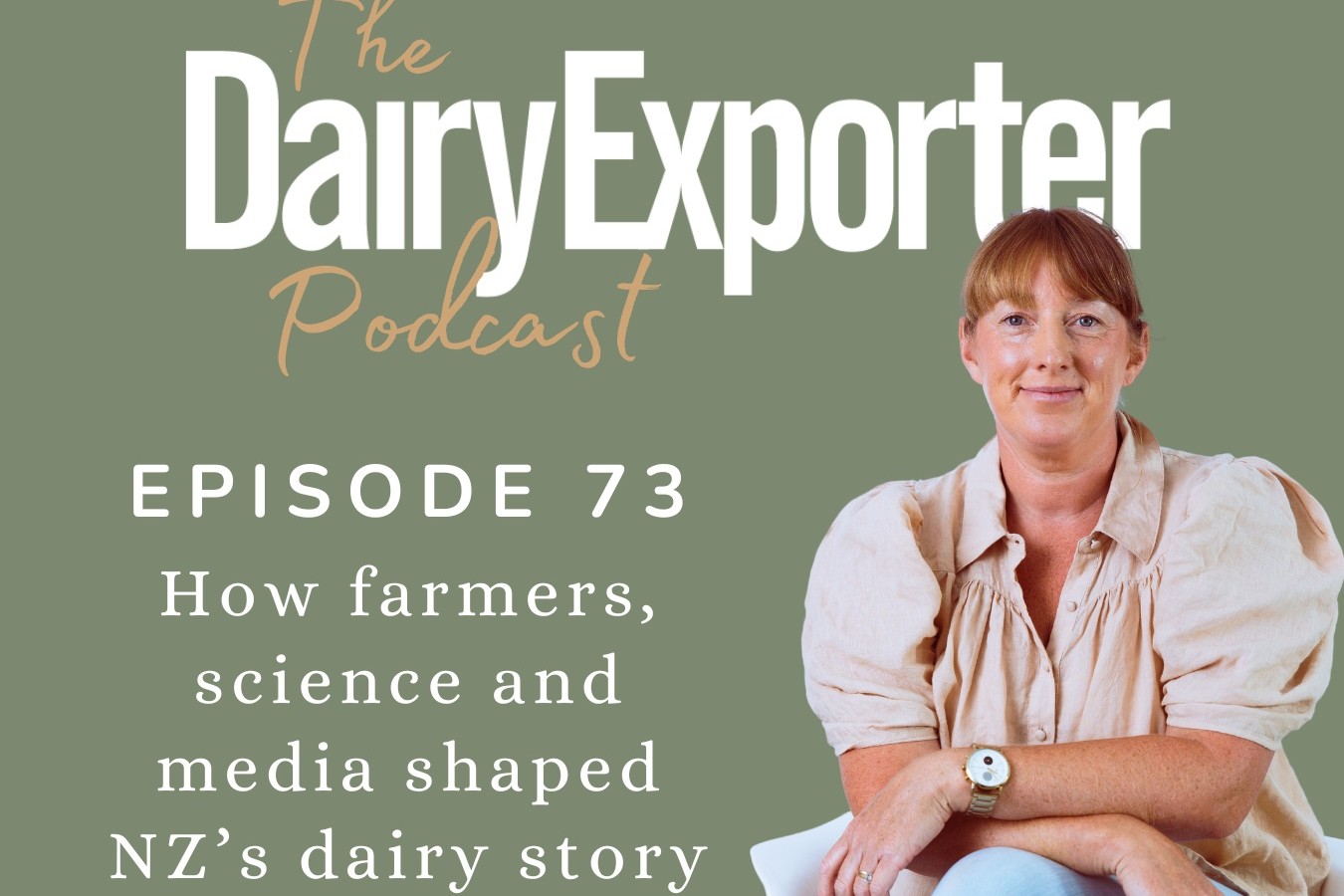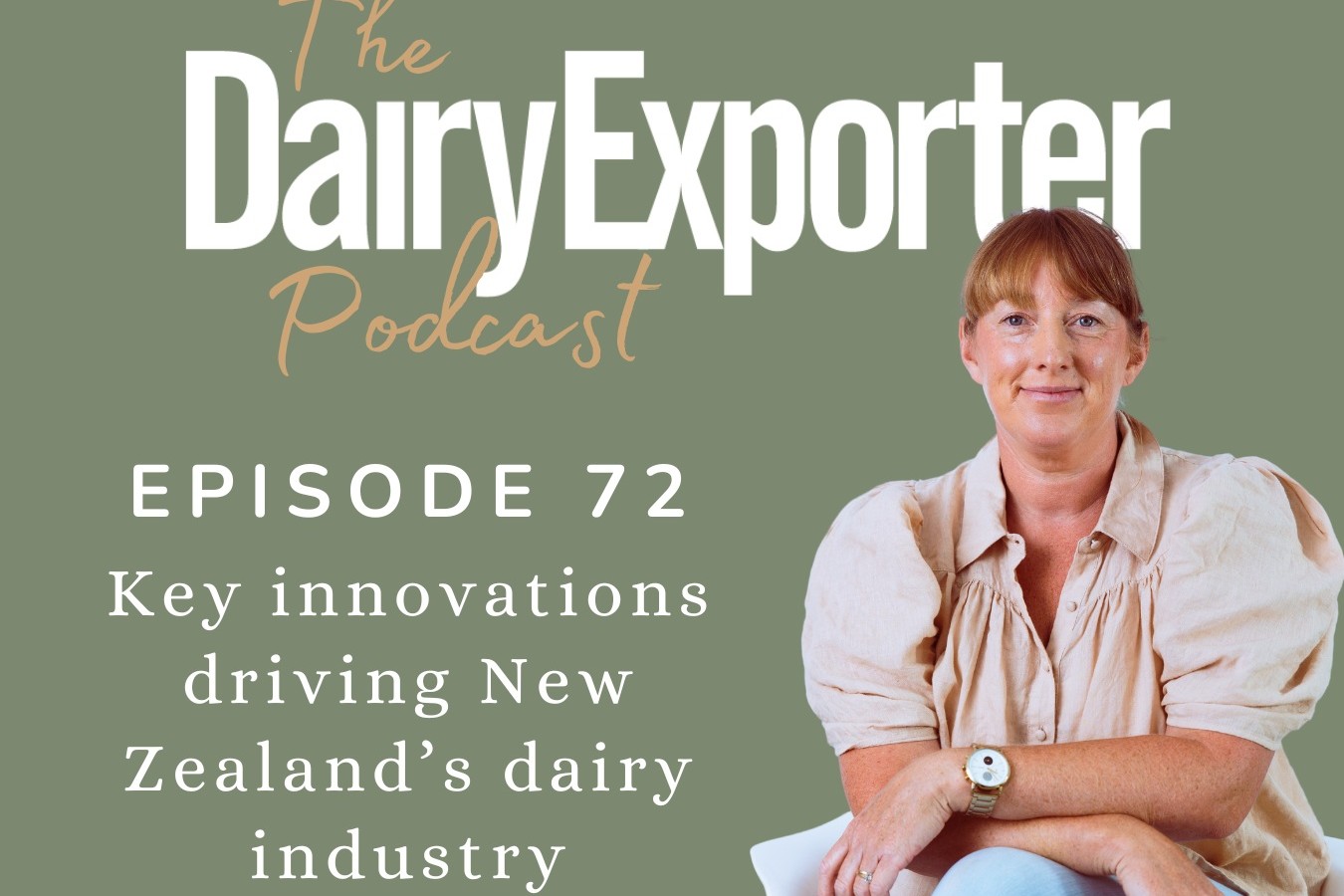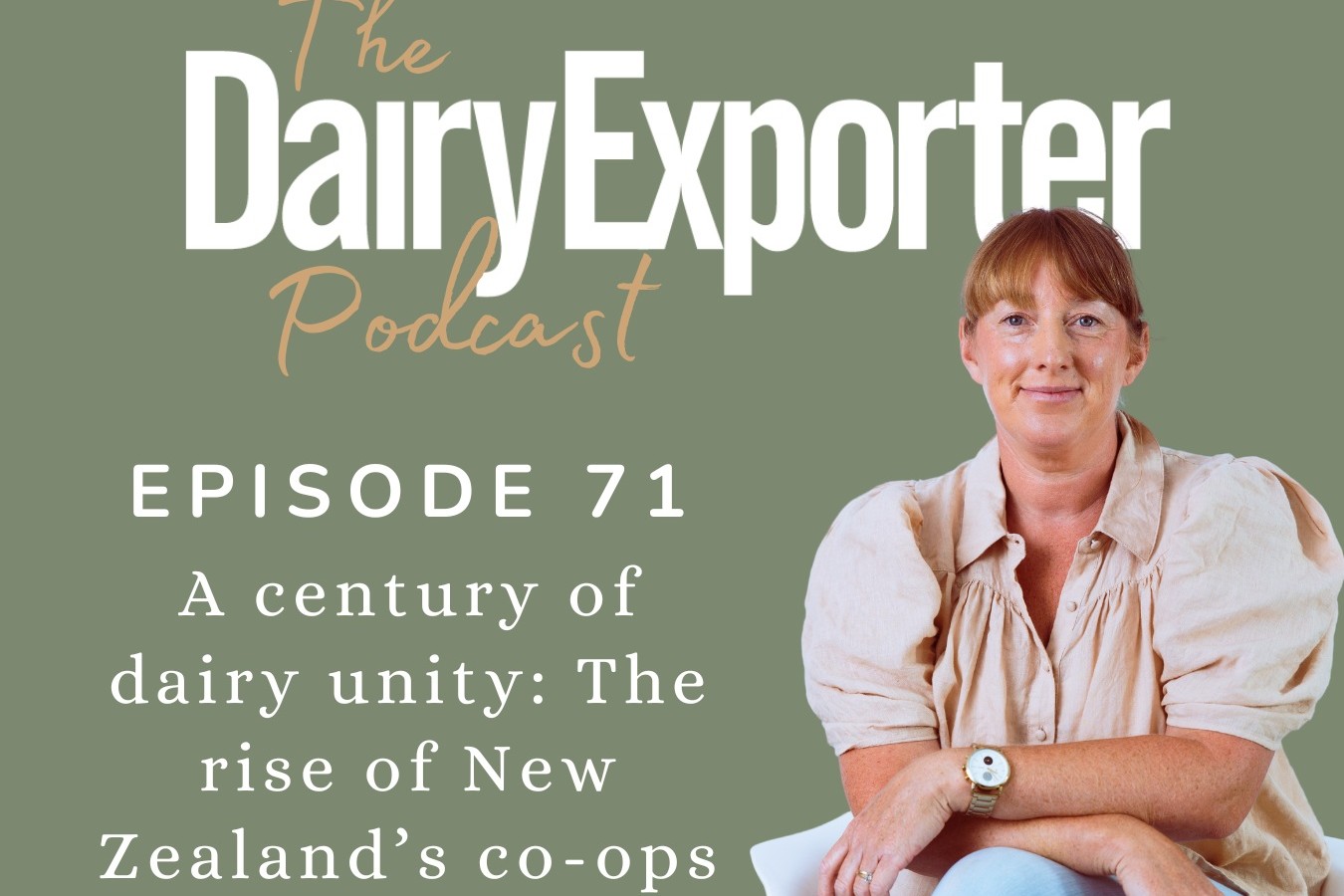Episode 64 – The path to sustainable dairy: Efficiency, innovation, and technology
This episode highlights insights from industry leaders driving sustainability in dairy farming. Malcolm Ellis, Fonterra’s Strategic Advisor, discusses improving animal productivity to reduce emissions, introducing the Co-operative Difference payment. Scott Townshend, CEO of Trev, explains how data and feed conversion efficiency help farmers boost profitability while reducing input costs. Simon Le Heron, CEO of Canterbury Grasslands, shares how standardising systems across his large-scale, pasture-based operation optimises land use and feed conversion.
Together, these experts show how innovation, technology, and efficiency are essential to achieving both environmental and financial gains in New Zealand’s dairy industry.
Guests:
- Malcolm Ellis, Strategic Advisor, Fonterra
- Scott Townshend, CEO, Trev
- Simon Le Heron, CEO, Canterbury Grasslands
Hosts:
- Sheryl Haitana, Editor, Dairy Exporter
- Anne Lee, Deputy Editor, Dairy Exporter
Malcolm Ellis is Fonterra’s Strategic Advisor and a key figure in the co-operative’s efforts to reduce emissions intensity across its dairy supply chain. With a strong background in pastoral farming and on farm productivity, he plays a central role in aligning Fonterra’s sustainability goals with practical opportunities for farmers.
In this interview, Malcolm introduces Fonterra’s new Co-operative Difference payment, offering an additional one to five cents per kilogram of milk solids for meeting emissions efficiency benchmarks. He explains how this incentive is directly linked to animal productivity and overall farm efficiency, forming part of a wider emissions intensity reduction strategy launched in November 2023.
He highlights a 165kgMS gap between the top and bottom quartile cows – representing a 42% production efficiency opportunity and a potential 16% methane reduction. Rather than reducing cow numbers, he stresses the importance of lifting animal efficiency through improved fertility, feed conversion and genetic selection.
Malcolm also discusses the role of tools like Trev and the Farm Insights Report in helping farmers track progress and unlock both environmental and financial gains.
Scott Townshend, CEO of Trev, a digital farm reporting platform helping New Zealand farmers make better, data-driven decisions across their systems. With growing pressure to produce lower-emissions milk, Scott emphasises that improving efficiency, rather than chasing emissions targets in isolation, is the smarter, more sustainable path.
In this interview, he explains how feed conversion efficiency (FCE) is a practical, easy-to-understand metric that links productivity, profitability, and sustainability. Scott shares that farms using Trev have achieved an average annual lift of 4.6kgMS per tonne of drymatter, equating to around $90,000 in added revenue and a likely drop in input costs.
He highlights how real-time data enables farmers to act in-season rather than retrospectively, improving decision-making on feed use, mob management, and culling. Regional benchmarking within Trev also allows users to see how they stack up against peers, encouraging knowledge sharing without judgment.
Ultimately, Scott sees Trev as a support tool – empowering farmers to refine their systems and continue leading the world in efficient, sustainable dairy production.
Simon Le Heron, CEO of Canterbury Grasslands, a large-scale dairy business milking 24,000 cows across Waikato, Canterbury, and Southland. With a focus on pasture-based, low-cost systems, Simon believes simplicity, consistency and discipline are key to long-term profitability.
In this interview, he explains how a standardised approach – what he calls a “McDonald’s menu” – allows the business to train staff effectively and maintain performance across multiple regions. Weekly pasture walks, wedge tracking via Agrinet, and consistent measurement of comparative stocking rate help maximise grass harvested per hectare, while minimising supplementary inputs.
Comparative stocking rate is their most important metric, with a target in the low- to mid-80s seen as the sweet spot for feed and financial efficiency. While individual cow data is becoming more valuable, the business remains focused on optimising land use and feed conversion.
Simon sees promise in data and technology, particularly with over 20 years of pasture growth records. As environmental limits tighten, he encourages farmers to find efficiency gains that benefit both the bottom line and compliance, helping keep New Zealand dairy globally competitive.





